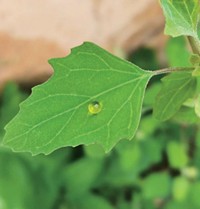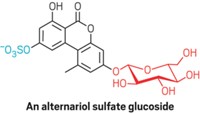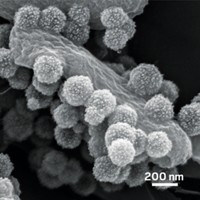Advertisement
Grab your lab coat. Let's get started
Welcome!
Welcome!
Create an account below to get 6 C&EN articles per month, receive newsletters and more - all free.
It seems this is your first time logging in online. Please enter the following information to continue.
As an ACS member you automatically get access to this site. All we need is few more details to create your reading experience.
Not you? Sign in with a different account.
Not you? Sign in with a different account.
ERROR 1
ERROR 1
ERROR 2
ERROR 2
ERROR 2
ERROR 2
ERROR 2
Password and Confirm password must match.
If you have an ACS member number, please enter it here so we can link this account to your membership. (optional)
ERROR 2
ACS values your privacy. By submitting your information, you are gaining access to C&EN and subscribing to our weekly newsletter. We use the information you provide to make your reading experience better, and we will never sell your data to third party members.
Agriculture
Microparticles protect bees from pesticides
Enzymes in particles degrade organophosphates in bees’ guts
by Celia Henry Arnaud
May 27, 2021
| A version of this story appeared in
Volume 99, Issue 20

Pesticides used to shield crops from damaging insects have the unintended effect of killing pollinators such as bees. Researchers have now made consumable microparticles that resemble pollen grains as a way to protect bees from organophosphate pesticides. Jing Chen, James Webb, and Minglin Ma of Cornell University and coworkers make the microparticles of calcium carbonate nanoparticles that assemble around phosphotriesterase enzymes (Nat. Food 2021, DOI: 10.1038/s43016-021-00282-0). The enzymes then degrade the organophosphates. Adding gelatin to the mixture helps nucleate the microparticles and makes them consistently about 4 µm in diameter. The researchers fed bees a mixture of the microparticles suspended in a sugar solution. Those that ate the microparticles were protected against exposure to the organophosphate pesticides paraoxon and malathion. Following exposure for 12 h to pollen contaminated with paraoxon, 70% of bees that ate the microparticles survived. In 10-day studies with paraoxon and malathion, 38% of bees that ate the microparticles survived. Bees that didn’t eat the microparticles died after 5 days of exposure to paraoxon or malathion. The researchers say the microparticles are intended for managed pollinators, not wild ones. Chen, Webb, and Ma are involved with a company that is commercializing the technology.





Join the conversation
Contact the reporter
Submit a Letter to the Editor for publication
Engage with us on Twitter